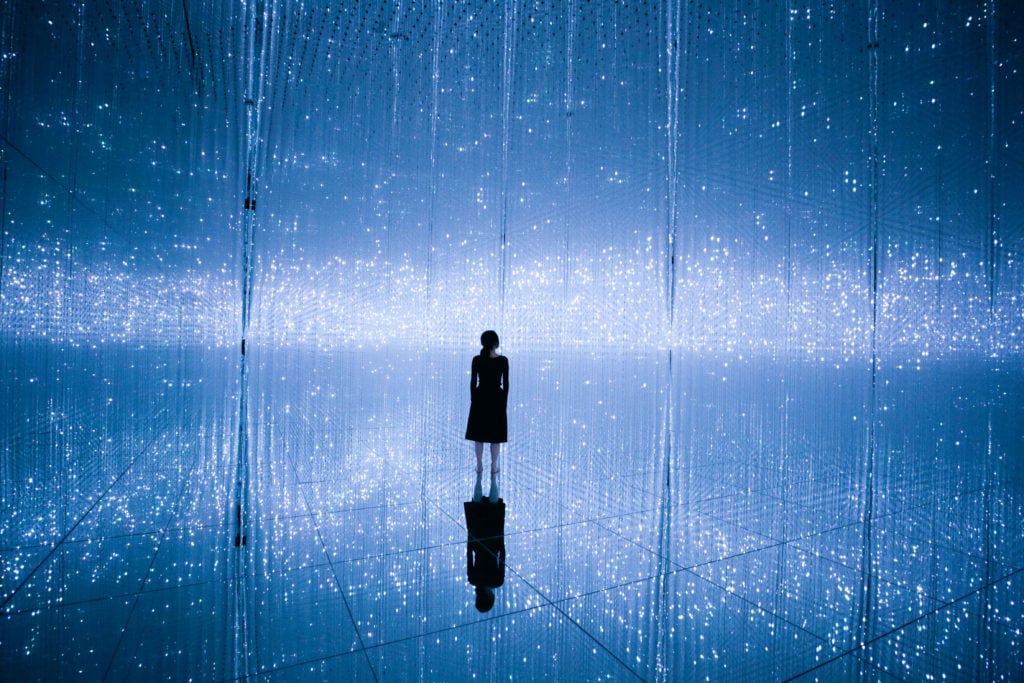On View
teamLab’s Tokyo Museum Has Become the World’s Most Popular Single-Artist Destination, Surpassing the Van Gogh Museum
More than two million people visited the site in its first year.

More than two million people visited the site in its first year.

Naomi Rea

The art collective teamLab’s new, immersive museum in Tokyo attracted more visitors than the Van Gogh Museum in Amsterdam last year, and twice the combined number of visitors to the three Dalí museums in Spain. The box-office success of teamLab’s museum in its inaugural year makes the venue the world’s most visited single-artist museum, its organizers claim.
In its first year of operation, teamLab Borderless in Tokyo attracted 2.3 million visitors in total. A further 1.2 million visitors enjoyed the collective’s temporary immersive light experience in Japan’s capital.
While Japan has long been the land of blockbuster shows, the attendance statistics underscore the appeal of immersive experiences worldwide, especially among millennials and members of Gen Z. Visitors came from more than 160 countries to experience teamLab’s installations in Tokyo, with nearly a third coming from the United States.
This bodes well for the popular tech-art collective, which hopes to break the US market soon. It was due to open a 55,000-square-foot museum in Brooklyn’s Industry City later this month, although a spokeswoman for the collective tells artnet News that it has decided to pause work on this permanent exhibition “while we rethink our strategy for entering the American market.”
To put teamLab’s attendance in a New York perspective, the Metropolitan Museum of Art’s Costume Institute blockbuster, “Heavenly Bodies: Fashion and the Catholic Imagination,” the most-attended show in the museum’s history, attracted 1.7 million visitors in 2018—considerably less than teamLab’s museum.
Founded in 2001 in Japan, the collective of artists, programmers, engineers, animators, architects, and mathematicians seeks to explore through interactive light sculptures how art, science, technology, and design fit in with the natural world. They have been greeted by a mix of skepticism from the art world and boundless enthusiasm from the general public.
The permanent museum called teamLab Borderless, and a temporary experience, teamLab Planets, opened last summer in Tokyo’s Odaiba and Toyosu neighborhoods. General admission to each venue is $30. Visitors to the teamLab Borderless museum interact with constantly shifting light sculptures, which move around the space, offering visitors the experience of a “museum without a map.”
In the teamLab Planets experience, visitors walk barefoot through water and light installations in the space. The light-and-sound installations respond to visitors’ movements.
Around half of the visitors to teamLab Borderless came from overseas, with 27 percent coming from the US, followed by Australia, China, Thailand, Canada, and the UK. Some 50 percent of these overseas visitors stated that visiting the museum was their reason for coming to Tokyo, according to an in-house survey. Around 30 percent of the 1.25 million people who visited teamLab Planets in Toyosu were from overseas; 43 percent came from the US.
The immersive experiences in Tokyo had greater attendance than Amsterdam’s Van Gogh Museum, which received just over 2.1 million visitors last year, and more than twice the attendance of Barcelona’s Picasso Museum (949,000 visitors) and the Dalí Theatre-Museum (1,105,000 visitors) in the north of Spain.
teamLab Borderless is located at 1-3-8 Aomi, Koto-ku, Tokyo. teamLab Planets is on view until fall 2020 at 6 Chome-1-16 Toyosu, Koto, Tokyo.